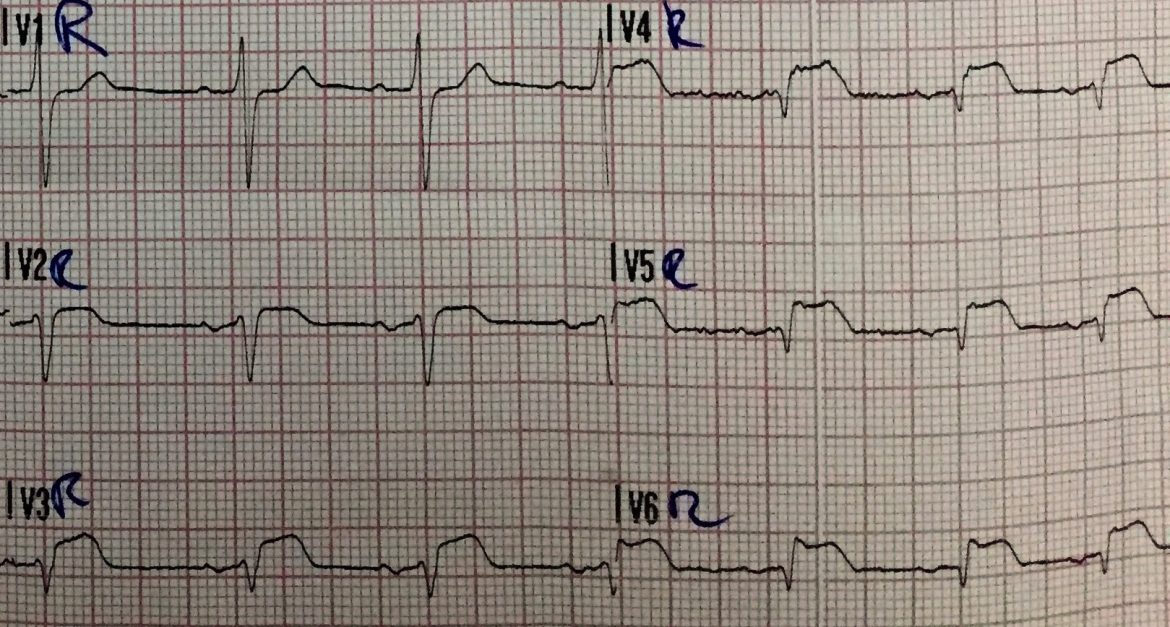Ventricular abnormalities refer to a range of conditions affecting the ventricles, the heart’s two lower chambers. These conditions can include ventricular tachycardia, ventricular fibrillation, hypertrophic cardiomyopathy, dilated cardiomyopathy, and others. Recognizing the symptoms is crucial for early diagnosis and effective treatment. This article delves into the various symptoms associated with ventricular abnormalities, providing insights into their detection and the importance of timely medical intervention.
Common Symptoms of Ventricular Abnormalities
1. Palpitations
Palpitations are among the most common symptoms associated with ventricular abnormalities. Patients often describe these as a fluttering, racing, or pounding sensation in the chest. Palpitations can be sporadic or sustained and might occur at rest or during physical activity. They are typically indicative of abnormal heart rhythms, such as ventricular tachycardia or ventricular fibrillation.
SEE ALSO: Why Do I Have Low Blood Pressure During Pregnancy?
2. Shortness of Breath
Shortness of breath (dyspnea) is another prevalent symptom, especially in conditions like dilated cardiomyopathy and hypertrophic cardiomyopathy. The inefficient pumping of blood by the ventricles leads to fluid accumulation in the lungs, causing difficulty in breathing.
This symptom can be more pronounced during physical exertion but may also occur at rest in severe cases.
3. Chest Pain
Chest pain or discomfort is a critical symptom that warrants immediate attention. In ventricular abnormalities, chest pain can result from inadequate blood flow to the heart muscle (ischemia), often due to arrhythmias or structural abnormalities.
The pain may vary from a sharp, stabbing sensation to a dull ache and can radiate to the neck, jaw, or arms.
4. Fatigue
Fatigue is a common symptom associated with many types of ventricular abnormalities. The heart’s reduced ability to pump blood efficiently can lead to decreased oxygen supply to the body’s tissues, resulting in persistent tiredness and weakness.
This symptom can significantly impact the quality of life, making routine activities challenging.
5. Dizziness and Fainting
Dizziness and fainting (syncope) are serious symptoms that indicate a significant problem with the heart’s ability to maintain an adequate blood flow to the brain. These symptoms are often seen in severe arrhythmias like ventricular tachycardia and ventricular fibrillation. Syncope, in particular, can be a warning sign of a potentially life-threatening condition.
6. Swelling
Swelling (edema), particularly in the legs, ankles, and feet, can be a symptom of ventricular abnormalities. This occurs when the heart’s reduced pumping efficiency leads to fluid retention in the body’s tissues. Swelling may also affect the abdomen, causing discomfort and a sense of bloating.
7. Rapid or Irregular Heartbeat
A rapid or irregular heartbeat (arrhythmia) is a hallmark symptom of many ventricular abnormalities. Patients may experience episodes of a racing heart (tachycardia) or irregular beats (fibrillation). These irregularities can be detected through diagnostic tools such as electrocardiograms (ECGs) and Holter monitors.
Specific Symptoms Based on Different Ventricular Abnormalities
Ventricular Tachycardia
Ventricular tachycardia is characterized by a rapid heartbeat originating from the ventricles. Symptoms include:
Palpitations: A sudden onset of a fast, pounding heart.
Chest Pain: Discomfort due to increased heart rate and reduced blood flow.
Shortness of Breath: Resulting from inefficient blood circulation.
Dizziness and Syncope: Due to decreased blood flow to the brain.
Ventricular Fibrillation
Ventricular fibrillation is a severe condition where the ventricles quiver ineffectively. Symptoms include:
Sudden Collapse: Often the first sign due to immediate loss of effective heart function.
Loss of Consciousness: Results from the brain’s lack of oxygen.
Absence of Pulse: A medical emergency requiring immediate resuscitation.
Hypertrophic Cardiomyopathy
Hypertrophic cardiomyopathy involves thickening of the heart muscle, particularly the ventricles. Symptoms include:
Shortness of Breath: Due to increased stiffness and reduced filling of the ventricles.
Chest Pain: Often exacerbated by physical activity.
Palpitations: Irregular heart rhythms due to abnormal muscle growth.
Syncope: Especially during or after exercise, due to obstructed blood flow.
Dilated Cardiomyopathy
Dilated cardiomyopathy is characterized by an enlarged and weakened ventricle. Symptoms include:
Fatigue: Resulting from the heart’s decreased pumping ability.
Shortness of Breath: Due to fluid buildup in the lungs.
Swelling: Particularly in the lower extremities.
Irregular Heartbeat: Including atrial fibrillation or ventricular arrhythmias.
Restrictive Cardiomyopathy
Restrictive cardiomyopathy involves stiffening of the ventricles, which restricts proper filling. Symptoms include:
Shortness of Breath: Especially noticeable during exertion.
Fatigue: Due to reduced cardiac output.
Swelling: In the legs, ankles, and feet.
Palpitations: From irregular heart rhythms.
Diagnostic Approaches
Recognizing the symptoms of ventricular abnormalities is the first step towards diagnosis. Medical professionals use various diagnostic tools to confirm these conditions:
Electrocardiogram (ECG)
An electrocardiogram (ECG) records the electrical activity of the heart and helps detect arrhythmias, hypertrophy, and other abnormalities.
Echocardiogram
An echocardiogram uses ultrasound waves to create images of the heart, allowing for the assessment of its structure and function, including the detection of cardiomyopathies.
Blood Tests
Blood tests can detect markers of heart failure, myocardial infarction, and other conditions associated with ventricular abnormalities.
Treatment Options
The treatment of ventricular abnormalities depends on the specific condition and severity of symptoms. Common treatments include:
Medications
Antiarrhythmics: To control abnormal heart rhythms.
Beta-blockers and Calcium Channel Blockers: To reduce heart rate and blood pressure.
Diuretics: To manage fluid buildup in cases of heart failure.
ACE Inhibitors and ARBs: To improve heart function and reduce blood pressure.
Implantable Devices
Pacemakers: To regulate heartbeats in cases of bradycardia.
Implantable Cardioverter-Defibrillators (ICDs): To prevent sudden cardiac death by correcting life-threatening arrhythmias.
Conclusion
Understanding and recognizing the symptoms of ventricular abnormalities is crucial for early diagnosis and effective treatment. Common symptoms such as palpitations, shortness of breath, chest pain, fatigue, dizziness, swelling, and irregular heartbeats should prompt immediate medical attention. Through a combination of diagnostic tools and tailored treatments, healthcare providers can manage these conditions and improve patient outcomes. If you experience any of these symptoms, consult a healthcare professional promptly to ensure timely and appropriate care.


